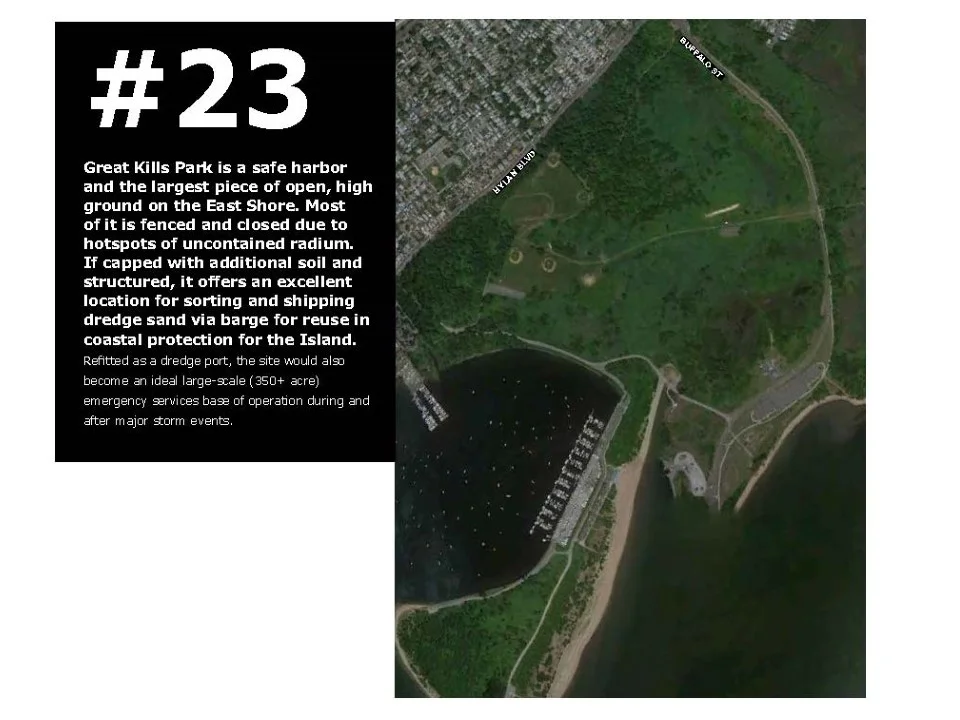36 IDEAS FOR STATEN ISLAND
AND COASTAL NYC & NJ
PennDesign 2013
STUDIO CRITICS:
Ellen Neises with Nicholas Pevzner
DESIGNERS:
Frederick Day, Wess Diptee, Kordae Henry, Chieh Huang, Angelina Jones, Joanna Karaman, Brett Kessler, Ying Liu, Yadan Luo, Thomas MacDonald, Jacqueline Martinez, Adela Park, Anooshey Rahim, Katherine Rodgers, Michael Shafir, Emily Silber, Emily Van Geldern, Matthew Wiener, Helen Yu, Yelena Zolotorevskaya
36 Ideas for Staten Island and Coastal NYC & NJ is an illustrated catalog of ideas for the East Shore of Staten Island, the area hardest hit by Sandy’s storm surge. The ideas were generated by 20 landscape architecture and architecture graduate students at the University of Pennsylvania over a 4-month period beginning January 2013 in a studio led by Ellen Neises and Nicholas Pevzner. Many collaborators in city government, and at the College of Staten Island and Pratt Institute helped deepen and vet the proposals.
The catalog was unbound—a notebook and slide set of alternative futures for the East Shore that could be pinned up, added to or subtracted from—to facilitate discussion and reinvention. The document was presented at the College of Staten Island’s “Future of Staten Island” public discussion and was used at neighborhood recovery and adaption meetings, and at the NYC Department of City Planning, Zone A New York , Council of State Governments, and the Consensus Building Institute.
Where sea walls along the East Shore had failed, new solutions had to be sought. The ideas presented in the catalog ranged from speculative projections, to concrete place-based strategies to fortify and reinforce the coastal edge. We explored a variety of means of paying for fortification with development and infrastructure, and showed several layered solutions to coastal adaptation. The studio asked designers to consider the human and institutional side of decision making, and to develop a diverse set of communication tools for the representation of risk, options and scenarios to support public conversation.
As a body of work, these diverse ideas (albeit sketches quickly drawn) made the case that large-scale landscape design—not just large-scale planning and engineering, and site-scale building design—is needed to ensure that preparing for sea level rise and the storms ahead doesn’t result in the application of one size fits all “fixes” that reduce complexity, and diminish diversity of neighborhood character, waterfront edges, ecologies and quality of life.

























































































